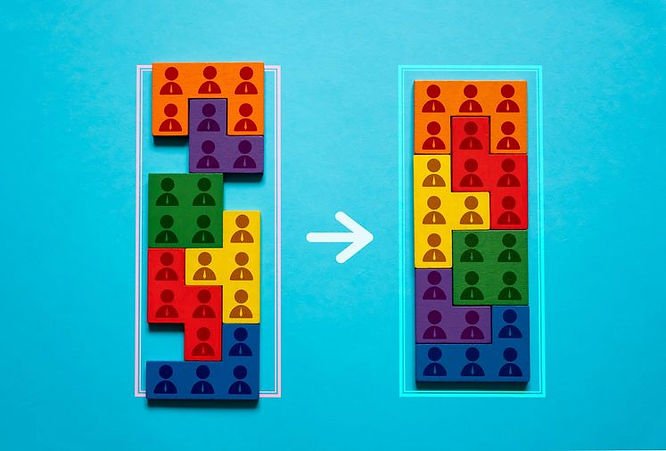Influencer marketing has emerged as a powerful tool for e-commerce businesses to reach new customers, increase brand visibility, and ultimately drive sales. By partnering with the right influencers, you can tap into their loyal and engaged audiences to promote your products and create a buzz around your brand. In this guide, we’ll outline the key steps to successfully using influencer marketing to drive sales on your e-commerce site, from identifying your target audience to maintaining long-term relationships with influencers.
Influencer marketing can be a powerful tool to drive sales for your e-commerce site. By leveraging influencers, you can tap into their large and engaged audiences to promote your products and increase brand awareness. Here are some steps to help you effectively use influencer marketing to drive sales.
10 Steps To Implement Influencer Marketing
-
Set clear goals: Define your objectives for influencer marketing, such as increasing brand awareness, driving sales, or improving customer engagement. This will help you measure the success of your campaigns and make adjustments as needed.
-
Identify your target audience: Understand your ideal customer’s demographics, interests, and behaviors to select influencers who resonate with them. This ensures a higher likelihood of driving conversions.
-
Find the right influencers: Look for influencers who have a strong connection with their audience, high engagement rates, and content that aligns with your brand values. Use tools like SocialBlade, BuzzSumo, or HypeAuditor to find potential candidates.
-
Establish a budget: Determine how much you’re willing to spend on influencer marketing. Consider factors like influencer fees, product giveaways, and content creation costs.
-
Build relationships with influencers: Reach out to potential influencers with a personalized message, explaining your brand’s story and why you believe they would be a great fit for your campaign. Building genuine relationships can lead to long-term partnerships and better results.
-
Develop a creative strategy: Collaborate with influencers to create content that aligns with your brand’s message, is authentic to their style, and resonates with their audience. This can include product reviews, unboxing videos, tutorials, or lifestyle content featuring your products.
-
Offer incentives: Provide influencers with incentives like free products, discounts, or affiliate commissions to encourage them to promote your brand and drive sales.
-
Track and measure performance: Monitor the performance of your influencer marketing campaigns using metrics like engagement rate, website traffic, and conversion rates. Use tools like Google Analytics or UTM parameters to track sales driven by each influencer.
-
Optimize and refine your strategy: Analyze your campaign results and use the insights to improve your influencer marketing strategy. Adjust your target audience, influencer selection, or content strategy based on the performance data.
-
Maintain ongoing relationships: Maintain regular communication with your influencers and provide them with updates about your products, promotions, and company news. This helps keep your brand top-of-mind and encourages long-term partnerships that can drive sustained sales growth.
By following these steps, you can effectively harness the power of influencer marketing to drive sales for your e-commerce site and grow your brand’s presence online.
Set Clear Goals

Setting clear goals is the foundation for a successful influencer marketing campaign. By defining your objectives, you can develop a focused strategy and establish key performance indicators (KPIs) to measure your progress. Some common goals for influencer marketing include:
Increasing Brand Awareness
Partnering with influencers can help you reach new audiences and expand your brand’s visibility. Metrics such as impressions, reach, and follower growth can be used to evaluate the success of this objective.
Driving Sales
Influencer marketing can directly impact your e-commerce site’s revenue by promoting your products to their followers. Track sales generated from influencer campaigns using tools like Google Analytics or UTM parameters, and measure performance through metrics like conversion rate and return on investment (ROI).
Improving Customer Engagement
Influencers can create content that sparks conversations and fosters engagement around your brand. Monitor engagement rates, including likes, comments, shares, and average time spent on your site, to assess the effectiveness of your campaigns in this regard.
Building Brand Trust
Influencers who genuinely believe in your products can help establish credibility and trust among their followers. Pay attention to the sentiment of comments and messages, and monitor the number of positive reviews and testimonials generated by your campaigns.
Expanding Your Content Library
Collaborating with influencers can result in the creation of high-quality, diverse content that you can use across your marketing channels. Measure the impact of this content by tracking its reach, engagement, and contribution to your overall content strategy.
By setting clear goals and identifying relevant KPIs, you’ll be able to gauge the success of your influencer marketing campaigns and make data-driven adjustments as needed to optimize your strategy and maximize results.
Identify Your Target Audience

Identifying your target audience is a critical step in developing an effective influencer marketing strategy. By understanding the characteristics and preferences of your ideal customers, you can select influencers who appeal to them, increasing the chances of driving conversions. Here’s how to identify your target audience:
Analyze Your Existing Customers
Examine your current customer base to understand who is already buying your products. Look for common demographic traits (age, gender, location), interests, and behaviors. This will give you a clearer picture of your ideal customer profile.
Conduct Market Research
Research your competitors and the broader market to identify potential gaps or underserved segments. This can help you discover new target audiences that may be interested in your products.
Create Buyer Personas
Develop fictional representations of your ideal customers based on the insights gathered from analyzing your customer base and conducting market research. Buyer personas should include demographics, interests, pain points, and buying behaviors. These personas will guide your influencer selection and content creation process.
Match Personas With Influencers
Once you have a clear understanding of your target audience, search for influencers whose followers align with your buyer personas. Look for influencers who share similar interests, values, and content themes as your target audience. Their followers are more likely to engage with your brand and convert it into customers.
Evaluate Influencer Audience Demographics
Analyze the demographics of an influencer’s followers to ensure they align with your target audience. Many influencers provide media kits or audience insights that include information about their followers’ age, gender, location, and interests.
Monitor Engagement Rates
High engagement rates indicate a strong connection between an influencer and their audience. This is important, as engaged followers are more likely to trust the influencer’s recommendations and convert into customers.
By identifying your target audience and selecting influencers who resonate with them, you can create more impactful influencer marketing campaigns that drive conversions and deliver a higher return on investment for your e-commerce site.
Find The Right Influencers

Finding the right influencers is crucial for the success of your influencer marketing campaign. The ideal influencer should have a strong connection with their audience, high engagement rates, and content that aligns with your brand values. Here are some steps to help you find the right influencers for your e-commerce site:
Define Your Ideal Influencer Profile
Based on your target audience and brand values, create a profile that outlines the characteristics of the influencers you want to work with. Consider factors such as their niche, audience size, content style, and platform.
Use Influencer Discovery Tools
Leverage tools like SocialBlade, BuzzSumo, or HypeAuditor to discover potential influencers in your niche. These tools provide useful information on influencers’ audience size, engagement rates, and content performance.
Search On Social Media Platforms
Browse relevant hashtags, keywords, and industry-related topics on social media platforms to identify influencers who create content related to your brand or products. Look for those who consistently engage with their followers and have a strong presence on the platform.
Check For Brand Alignment
Review potential influencers’ content to ensure it aligns with your brand values and messaging. Influencers who share similar values and aesthetics are more likely to create authentic content that resonates with their audience and promotes your brand effectively.
Assess Engagement Rates
High engagement rates indicate a strong connection between an influencer and their audience. Look for influencers who consistently receive a high number of likes, comments, and shares on their content.
Analyze Audience Demographics
Ensure the influencer’s audience matches your target customer demographics by reviewing available audience insights or requesting information from the influencer directly.
Evaluate Credibility And Authenticity
Assess the influencer’s credibility and authenticity by looking at their history of brand partnerships, the quality of their content, and their reputation within their niche.
Reach Out And Build Relationships
Connect with potential influencers to gauge their interest in collaborating and learn more about their experience working with brands. Developing strong relationships with influencers can lead to more successful campaigns and long-term partnerships.
By following these steps and using the available tools, you can find the right influencers to partner with, increasing the effectiveness of your influencer marketing campaigns and driving sales on your e-commerce site.
Establish A Budget

Establishing a budget for your influencer marketing campaign is essential to ensure that you allocate resources effectively and maximize your return on investment. To determine how much you’re willing to spend, consider the following factors:
Influencer Fees
Influencers may charge a fee for creating content and promoting your products, depending on their level of expertise, audience size, and platform. Nano- and micro-influencers generally charge less than macro- and mega-influencers. Research industry benchmarks and negotiate rates with influencers to find a balance between cost and value.
Product Giveaways
Offering free products to influencers for review or promotion is a common practice. Consider the cost of the products you plan to give away and include shipping expenses if applicable.
Content Creation Costs
High-quality content may require additional investments in equipment, props, or editing services. Discuss these costs with influencers upfront and include them in your budget.
Sponsored Content Fees
If you plan to sponsor influencers’ posts on social media platforms, you’ll need to allocate funds for sponsored content fees. These costs will vary depending on the platform and the reach of your sponsored posts.
Affiliate Commissions
If you’re using an affiliate marketing model, allocate a budget for commissions that you’ll pay influencers for each sale generated through their unique affiliate links.
Influencer Marketing Platforms
Some businesses choose to use influencer marketing platforms or agencies to manage their campaigns. If you plan to use these services, factor in their fees or subscription costs.
Tracking And Analytics tools
Investing in tools to track the performance of your influencer marketing campaigns, like Google Analytics or UTM parameters, can help you optimize your strategy. Include the cost of these tools in your budget.
Once you’ve considered these factors and estimated the associated costs, create a comprehensive budget that outlines your total investment in influencer marketing. Keep in mind that your budget should be flexible and adjustable based on the results of your campaigns. Monitor your return on investment closely to ensure your influencer marketing efforts are cost-effective and contributing to your overall business goals.
Build Relationships With Influencers

Building strong relationships with influencers is essential for the success of your influencer marketing campaigns. Genuine connections can lead to more authentic content, long-term partnerships, and better results for your e-commerce site. Here are some tips to help you build and maintain relationships with influencers:
Do Your Research
Before reaching out to influencers, take the time to research their content, interests, and values. This will help you craft a personalized message that demonstrates your genuine interest in working with them.
Craft A Personalized Message
When contacting potential influencers, avoid generic messages. Instead, mention specific aspects of their content that resonate with your brand and explain why you believe they would be a great fit for your campaign.
Share Your Brand’s Story
Provide influencers with information about your brand, including its mission, values, and unique selling points. This helps them understand your brand’s identity and create content that aligns with your messaging.
Offer Mutual Benefits
Emphasize the benefits of collaborating with your brand, such as free products, increased exposure, or monetary compensation. Ensure that the partnership is mutually beneficial for both your brand and the influencer.
Be professional And Respectful
Treat influencers as valued partners and communicate professionally and respectfully. Respond promptly to messages, answer questions, and address any concerns they may have.
Provide Creative Freedom
Allow influencers the creative freedom to produce content that fits their style and resonates with their audience. Trust their expertise and provide guidelines rather than strict requirements.
Maintain Ongoing Communication
Keep in touch with influencers throughout the campaign and beyond. Share updates, ask for feedback, and discuss potential future collaborations. Building long-term relationships can lead to better results and ongoing partnerships.
Show Appreciation
Acknowledge influencers’ hard work and express gratitude for their efforts. Offer incentives, like bonuses or increased commissions, for exceptional performance. Publicly recognize their contributions on your social media channels or website.
Measure And Share Results
Share the results of your influencer marketing campaigns with your partners. Discuss what worked well and identify areas for improvement. This transparent communication can strengthen your relationship and help optimize future campaigns.
By following these steps, you can build genuine relationships with influencers, fostering long-term partnerships that drive better results for your influencer marketing campaigns and your e-commerce site.
Develop A Creative Strategy

Developing a creative strategy for your influencer marketing campaign is crucial to ensure that the content produced aligns with your brand’s message, remains authentic to the influencer’s style, and resonates with their audience. Follow these steps to create an effective creative strategy:
Understand Your Brand’s Message And Values
Clearly define your brand’s messaging and values to guide the content creation process. Share this information with influencers to help them better understand your brand and create content that aligns with your objectives.
Define Content Objectives
Establish the goals you want to achieve with the content, such as raising brand awareness, educating consumers, or promoting a specific product. Communicate these objectives to the influencers to ensure your goals are met.
Collaborate With Influencers
Work closely with influencers to develop content ideas that suit their unique style and appeal to their audience. Encourage open communication and exchange of ideas to create authentic and engaging content.
Offer Content Suggestions
Provide influencers with content ideas that align with your brand’s message and showcase your products effectively. Some examples include product reviews, unboxing videos, tutorials, or lifestyle content featuring your products.
Create Content Guidelines
Develop guidelines that outline your expectations regarding content format, tone, product placement, and any specific talking points. This will help influencers create content that meets your requirements while still allowing them creative freedom.
Encourage Storytelling
Encourage influencers to incorporate storytelling into their content, as it can create a more engaging and memorable experience for their audience. This can involve sharing personal anecdotes, experiences, or testimonials related to your products.
Leverage Different Content Formats And Platforms
Encourage influencers to create content in various formats (e.g., images, videos, blog posts) and share it across multiple platforms (e.g., Instagram, YouTube, TikTok) to reach a wider audience and maximize engagement.
Monitor Content Quality
Review the content produced by influencers to ensure it meets your standards and adheres to your guidelines. Provide constructive feedback and address any concerns to maintain a consistent brand image.
Analyze Performance
Track the performance of the content using key performance indicators (KPIs) such as engagement rate, reach, and conversions. Use these insights to inform your creative strategy and optimize future campaigns.
By developing a creative strategy that aligns with your brand’s message, is authentic to the influencer’s style, and resonates with it its audience, you can create more effective influencer marketing campaigns that drive sales for your e-commerce site.
Offer Incentives

Offering incentives to influencers is an effective way to motivate them to promote your brand and drive sales on your e-commerce site. Incentives can take various forms, and by providing them, you demonstrate your appreciation for their work and build a strong partnership. Here are some common incentives you can offer to influencers:
Free Products
Provide influencers with free products for review, promotion, or personal use. This allows them to experience your products firsthand and create authentic content based on their experience.
Exclusive Discounts
Offer influencers unique discount codes to share with their followers. This not only incentivizes influencers to promote your brand but also encourages their audience to purchase on your e-commerce site.
Affiliate Commissions
Set up an affiliate marketing program that rewards influencers with a commission for every sale they generate through their unique affiliate links. This creates a performance-based incentive for influencers to actively promote your products and drive sales.
Bonuses Or Performance Incentives
Offer bonuses or additional incentives for influencers who exceed performance expectations or achieve specific milestones (e.g., a certain number of sales, new customers, or engagement metrics). This encourages them to put extra effort into promoting your brand and achieving better results.
Sponsored Content
Pay for sponsored posts, stories, or ads on influencers’ social media platforms. This can help increase the visibility of your content and incentivize influencers to create high-quality promotional materials.
Long-Term Partnerships
Offer influencers the opportunity to become long-term partners or brand ambassadors. This can provide them with a steady stream of income and give them a sense of belonging to your brand, motivating them to consistently promote your products.
Access To Exclusive Events Or Experiences
Invite influencers to exclusive events, product launches, or other experiences related to your brand. This can help them feel more connected to your brand and provide them with unique content opportunities.
Collaborative Product Development
Involve influencers in the development of new products or collections, giving them a sense of ownership and pride in the final product. This can lead to more authentic and enthusiastic promotion.
By offering incentives that align with your influencers’ interests and motivations, you can encourage them to actively promote your brand and drive sales on your e-commerce site. Remember to maintain open communication and nurture your relationships with influencers to ensure long-term success.
Track And Measure Performance

Tracking and measuring the performance of your influencer marketing campaigns is crucial to understanding their effectiveness and optimizing your strategy. By monitoring key metrics and using analytics tools, you can gain valuable insights into how well your campaigns are driving sales and engaging your target audience. Here are some steps to track and measure the performance of your influencer marketing campaigns:
Determine Key Performance Indicators (KPIs)
Establish the metrics that matter most to your campaign objectives, such as engagement rate (likes, comments, shares), website traffic, conversion rates, or return on investment (ROI).
Use UTM Parameters
Add UTM parameters to your campaign links to track the source of your website traffic in Google Analytics. This allows you to see which influencers are driving the most traffic and conversions.
Set Up Google Analytics Goals
Create specific goals in Google Analytics that align with your campaign objectives, such as completed purchases, newsletter sign-ups, or time spent on specific pages. This helps you measure the effectiveness of your influencer marketing efforts in driving desired actions.
Monitor Social Media Engagement
Keep track of engagement metrics on influencers’ social media posts, including likes, comments, shares, and saves. High engagement rates indicate a strong connection between the influencer and their audience, which can lead to better conversion rates.
Track Referral Traffic
Use Google Analytics to monitor the amount of traffic driven to your e-commerce site by influencers. Analyze factors like the number of unique visitors, pages per session, and bounce rate to assess the quality of the traffic.
Measure Conversion Rates
Monitor the conversion rates of visitors coming from influencer marketing campaigns. This will help you understand how effectively the campaigns are driving sales and whether adjustments need to be made.
Calculate ROI
Determine the return on investment for your influencer marketing campaigns by comparing the revenue generated to the total cost of the campaign. This helps you evaluate the effectiveness of your campaigns and identify areas for improvement.
Analyze Influencer-Specific Data
Examine the performance of each influencer individually to identify the most effective partners and optimize your influencer selection process for future campaigns.
Adjust Your Strategy Based On Insights
Use the data collected to identify trends, strengths, and weaknesses in your influencer marketing campaigns. Make data-driven decisions to optimize your strategy, such as adjusting content formats, targeting different audience segments, or collaborating with new influencers.
By tracking and measuring the performance of your influencer marketing campaigns, you can gain valuable insights into their effectiveness and make data-driven decisions to optimize your strategy, ultimately driving more sales for your e-commerce site.
Optimize And Refine Your Strategy

Optimizing and refining your influencer marketing strategy based on the performance data is essential to ensure continued success and growth in your e-commerce sales. By analyzing your campaign results and making data-driven adjustments, you can enhance your strategy and achieve better results. Here are some steps to optimize and refine your influencer marketing strategy:
Review Campaign Performance
Analyze the data collected from your campaigns, focusing on key performance indicators (KPIs) such as engagement rate, website traffic, conversion rates, and return on investment (ROI).
Identify Trends And Patterns
Look for trends and patterns in the data that can help you understand which aspects of your campaigns are working well and which areas need improvement.
Adjust Your Target Audience
If the data suggests that your current target audience is not responding well to your campaigns, consider refining your audience segments to better align with your brand and objectives.
Optimize Influencer Selection
Based on the performance data of individual influencers, identify which partners are driving the best results. Consider adjusting your selection criteria or seeking out new influencers with similar characteristics to those who are performing well.
Refine Your Content Strategy
Assess the types of content that are generating the most engagement and conversions. Modify your content strategy to focus on these formats or explore new content ideas that may resonate better with your audience.
Enhance Your Creative Strategy
Work closely with influencers to improve the quality and relevance of the content they produce. Share insights from the performance data to help them create more effective content for your brand.
Test Different Incentives
Experiment with different incentives to see which motivates influencers and their audiences the most. Adjust your incentive structure based on the results to optimize your campaigns.
Monitor And Measure Performance
Continue to track the performance of your campaigns as you make adjustments to your strategy. Use the data collected to refine your approach further and drive continuous improvement.
Learn From Your Competitors
Analyze your competitors’ influencer marketing strategies to identify trends, best practices, and potential areas of opportunity for your brand.
By continually analyzing your campaign results and using the insights to optimize and refine your influencer marketing strategy, you can improve the effectiveness of your campaigns, drive more sales on your e-commerce site, and achieve better results overall.
Maintain Ongoing Relationships

Maintaining ongoing relationships with your influencers is crucial for the long-term success of your influencer marketing strategy. Regular communication and engagement can help keep your brand top-of-mind, foster loyalty, and encourage long-term partnerships that drive sustained sales growth for your e-commerce site. Here are some tips for maintaining ongoing relationships with influencers:
Keep Communication Channels Open
Stay in touch with your influencers through emails, direct messages, or even phone calls. Regular communication helps build trust and rapport, making it easier to collaborate on future campaigns.
Share Updates And News
Provide influencers with updates about your products, promotions, and company news. This keeps them informed about your brand’s developments and can spark ideas for new content.
Offer Feedback And Support
Offer constructive feedback on influencers’ content and provide support whenever needed. Help them overcome challenges and address concerns promptly to maintain a positive working relationship.
Recognize Their Efforts
Acknowledge influencers’ hard work and express gratitude for their contributions. Publicly recognize their efforts on your social media channels or website, and offer incentives for exceptional performance.
Encourage Two-Way Communication
Foster open communication by encouraging influencers to share their thoughts, ideas, and concerns with you. Actively listen to their feedback and implement changes to improve your collaboration.
Offer Exclusive Opportunities:
Provide influencers with exclusive access to new products, events, or experiences to keep them engaged and excited about working with your brand.
Nurture Long-Term Partnerships
Invest in long-term partnerships with influencers who consistently drive results for your brand. This helps build trust and loyalty and enables you to capitalize on their growing influence over time.
Engage With Their Content
Show genuine interest in influencers’ work by engaging with their content on social media platforms. Like, comment, and share their posts to demonstrate your appreciation and support.
Collaborate On New Projects
Explore opportunities to collaborate with influencers on new projects, such as co-creating products, hosting events, or participating in joint marketing campaigns.
Regularly Evaluate Performance
Periodically review your influencer relationships to ensure they continue to align with your brand’s goals and objectives. Adjust your partnership strategy as needed to optimize results.
By maintaining ongoing relationships with influencers and fostering long-term partnerships, you can drive sustained sales growth and enhance the overall effectiveness of your influencer marketing strategy for your e-commerce site.
Influencer marketing can be a highly effective strategy for driving sales on your e-commerce site when implemented correctly. By carefully selecting influencers, developing engaging content, and nurturing ongoing relationships, you can leverage the power of influencers to reach new audiences and increase conversions. Remember to continuously track and optimize your campaigns, using data-driven insights to refine your strategy and maximize your return on investment. By following these steps, you can unlock the potential of influencer marketing and enjoy sustainable growth for your e-commerce business. Learn more about e-commerce strategy here.

